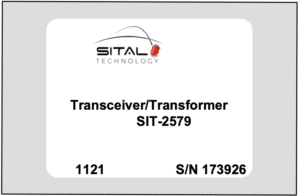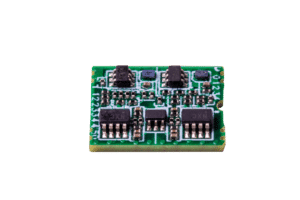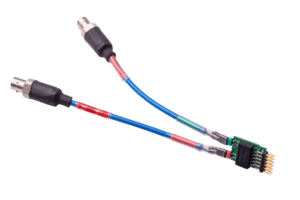Sital’s MIL-STD-1553 Tranceivers and Transformers
MIL-STD-1553 Tranceivers and Transformers
Explore Sital’s leading-edge MIL-STD-1553 transceivers and transformers, engineered for unparalleled power efficiency and performance in high-reliability applications. These components set a new industry benchmark for low power consumption and minimal dissipation, thanks to innovative power-switching devices.
Innovative Power Efficiency
Sital’s MIL-STD-1553 transceivers and transformers utilize advanced power-switching technology to significantly reduce output stage power dissipation to less than 300 mW when transmitting at a 100% duty cycle. This achievement represents the industry’s pinnacle of low power consumption. This ensures efficient operation even in the most demanding environments.
MIL-STD-1553b and MIL-STD-1760 Compliance
When paired with matching isolation transformers, Sital’s transceivers meet and exceed the requirements of MIL-STD-1553B and MIL-STD-1760 standards. Rigorous validation testing confirms their compliance, making these components ideal for applications requiring the highest levels of reliability.
Sital’s SIT-2579: Dual-Channel Transceiver/Transformer Combo
The SIT-2579 is Sital’s premium offering for high-reliability (Hi-Rel) applications, combining a dual-channel MIL-STD-1553/1760 transceiver with a dual isolation transformer in one compact solution. This design ensures transformer (stub) coupling and emits a minimum stub voltage of 20 volts peak-to-peak which are suitable for MIL-STD-1760 applications.
Leading Low Power Dissipation
The SIT-2579 is renowned for its industry-leading low transmitter power dissipation, reducing power consumption to under 300 mW at a 100% transmit duty cycle. Packaged in a 16-pad leadless, surface-mount package, the SIT-2579 epitomizes efficiency and reliability.
Enhanced Performance with Real-Time Correction
Operating in synergy with Sital’s 1553 digital IP in FPGAs or ASICs, the SIT-2579 utilizes a real-time closed-loop correction technique to minimize or eliminate transmitter residual voltages, or “dynamic offsets.” This method allows for continuous adjustments in response to power supply voltage and temperature changes, offering superior performance over traditional transmitters.
MIL-STD-1553 Solutions
Sital extends its offerings beyond transceivers and transformers, providing a complete range of solutions for MIL-STD-1553 applications. This includes packaged transceivers, transceiver design IP, and a selection of low-cost non-QPL isolation transformers that meet MIL-PRF-21038/27E specifications. These transformers are designed as drop-in replacements for industry-standard models. It is available in various configurations to suit all application needs.
Partnership with Xilinx
As a Xilinx FPGA partner, Sital Technology and Hardware Engineering, Ltd., highlights its commitment to delivering modern solutions. This collaboration facilitates the integration of Sital’s MIL-STD-1553 technologies into the latest FPGA platforms, offering customers optimized Size, Weight, Power, and Cost (SWaP-C) solutions.
Discover the efficiency and reliability of Sital’s MIL-STD-1553 transceivers and transformers, designed to meet the stringent requirements of military, aerospace, and industrial applications. With a focus on innovation and compliance, Sital ensures that your systems achieve peak performance with minimal power consumption.

Please Ask Us A Question
Transceivers for MIL-STD-1553
SIT-2579
A Dual-Channel MIL-STD-1553/1760 Transceiver-Transformer Combo.
This integrated solution is based on the design of the SIT-1579 dual transceiver with the addition of a dual isolation transformer to provide transformer (stub) coupling.
The SIT-2579 provides the lowest transmitter dissipation in the industry !
SIT-1579
Sital’s MIL-STD-1553/1760 Transceiver.
It’s a second source to Holt’s HI-1579 transceiver.
Based on discrete components, the SIT-1579 uses state of the art power switching devices which reduce the output stage power dissipation to less than 300 mW when transmitting at 100% duty cycle.
BRD1553XVR-PMOD
Sital’s BRD1553XVR-PMOD Adaptor Board is targeted to users developing MIL-STD-1553 applications requiring 1553 transceivers and transformers before their actual system’s hardware is available. For such applications, the BRD1553XVR-PMOD can be used for the evaluation of Sital’s 1553 IP and transceivers, or for software development.





